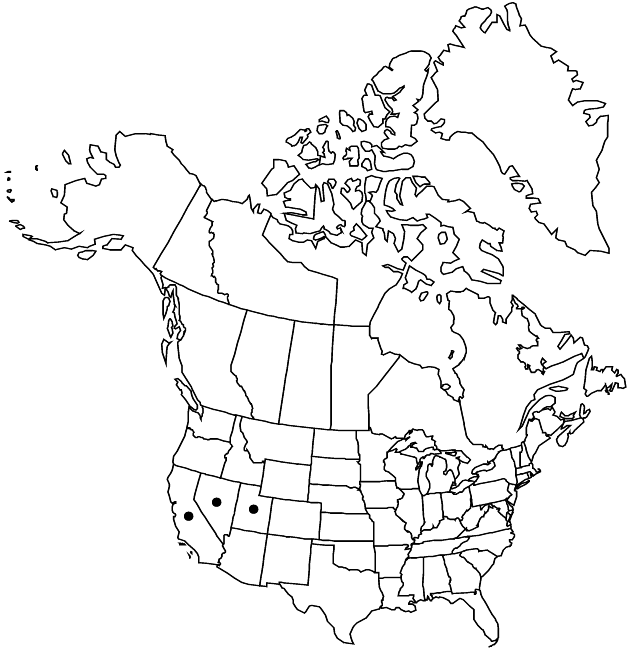Difference between revisions of "Erigeron clokeyi"
Brittonia 6: 214. 1947.
FNA>Volume Importer |
FNA>Volume Importer |
Revision as of 18:43, 24 September 2019
Perennials, 3–20(–30) cm; taprooted, caudices usually branched, retaining old leaf bases. Stems usually ascending to erect, moderately hirsute to hispidulous (hairs spreading-deflexed), minutely glandular at least distally. Leaves basal (persistent) and cauline (petioles prominently ciliate, hairs spreading, thick-based); basal blades 1–3-nerved, narrowly oblanceolate (often folding), 20–50(–80) × 1–5 mm, margins entire, faces strigose or hispidulous to hirsutulous, minutely glandular; cauline blades linear to linear-lanceolate, reduced distally to near heads. Heads 1(–2). Involucres 4–7 × 6–11 mm. Phyllaries in 2–3(–4) series (greenish), moderately hirsute, densely minutely glandular. Ray florets 20–40(–55); corollas blue, less commonly white to pink, 6–11 mm, laminae reflexing. Disc corollas 2.9–4.5 mm (throats tubular). Cypselae 1.8–2.5 mm, 2-nerved, faces sparsely strigose; pappi: outer of inconspicuous, fine setae, inner of (13–)20–27 bristles.
Distribution

w United States.
Discussion
Varieties 2 (2 in the flora).
Erigeron clockeyi is found in the Great Basin and Sierra Nevada.
Selected References
None.
Key
| 1 | Leaves hirsuto-strigose (hairs basally ascending, otherwise straight, antrorsely appressed); cypselae 2.2–2.5 mm; Charleston Mountains, Clark County, Nevada | Erigeron clokeyi var. clokeyi |
| 1 | Leaves uniformly hispidulous to hirsutulous (hairs spreading to spreading-arching, stiff); cypselae 1.8–2 mm; California, c Nevada, wc Utah | Erigeron clokeyi var. pinzliae |